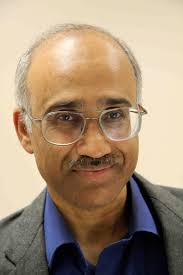





[Download the PDF Call for Papers]
Understanding networks and networked behavior has emerged as one of the foremost intellectual challenges of the 21st century. From an engineering perspective, interest originated in the context of early electrical and communication applications, and it has rapidly increased due to the evolution of communication infrastructure from switching hierarchies to a network of peers. Social and economic networks running on top of a networked infrastructure have added a novel dimension to the pervasive presence of networks in our lives. A third dimension has emerged as the theory of network phenomena and processes is leveraged to further our understanding of the behavior of complex systems in domains across science and engineering. Often, networks have intrinsic value and are themselves the object of study. In other instances, the network defines an underlying notion of proximity and the main object of interest is a signal defined on top of the graph, i.e., data associated with the nodes or edges of the network. This is precisely the focus of graph signal processing, studying the interplay between the underlying network topology and features of signals defined on networks. This symposium aims to bring together researchers and practitioners of graph signal processing to discuss the latest advances in theory, methods, and applications, as well as open problems and challenges.

California Institute of Technology, USA
Abstract
In classical digital signal processing (CSP) signals are defined as functions of discrete time or space, where the domain is a regular lattice such as a uniform grid. In graph signal processing (GSP) the signals are defined on vertices of graphs which are characterized by a graph adjacency matrix or a related matrix such as the Laplacian. The domain of the signal is therefore not necessarily a lattice, in fact it may not even be a domain with the notion of distance. In such cases, all the basic concepts of signal processing have to be revisited. This includes Fourier transforms, filtering, filter banks, and uncertainty relations associated with linear transforms. In recent years many researchers have contributed to the development of such ideas, and this has given birth to the field of graph signal processing. This talk starts with a brief review, and then goes into details of filtering, multirate systems, filter bank theory, and polyphase representations for graph signals. The somewhat unusual interrelationship between shift invariance, alias-free property, and polynomial property of linear systems on graphs is elaborated. Finally, uncertainty relations connecting graph signals and graph Fourier transforms are also discussed, and bounds on sparsity of eigenvectors of graphs are developed and demonstrated with examples.
Biography
Prof. P. P. Vaidyanathan has been with the California Institute of Technology since 1983. He received the B.Tech. and M.Tech. degrees in Radiophysics and Electronics from the University of Calcutta, India, in 1977 and 1979 respectively, and the Ph.D degree in Electrical and Computer Engineering from the University of California at Santa Barbara in 1982. His main research interests are in digital signal processing, multirate systems, filter banks, signal processing for digital communications, genomic signal processing, number theory, sparse array signal processing, and graph signal processing. He has authored many papers and four books in the signal processing area, and has received prizes for excellence in teaching at Caltech multiple times. Prof. Vaidyanathan served as the department head for Electrical Engineering at Caltech for 2002-2005. He is a Fellow of the IEEE, recipient of the F. E. Terman Award of the American Society for Engineering Education, past distinguished lecturer for the IEEE Signal Processing Society, and recipient of the IEEE CAS Society Golden Jubilee Medal. In 2016 he also received the IEEE Gustav Robert Kirchhoff Award (a Technical Field award) for "fundamental contributions to digital signal processing." He is a recipient of the IEEE Signal Processing Society’s Technical Achievement Award (2002), Education Award (2012), and Society Award (2016).

Delft University of Technology, Netherlands
Abstract
Stationarity is a cornerstone property that facilitates the analysis and processing of random signals in the time domain. Although time-varying signals are abundant in nature, in many contemporary applications the information of interest resides in more irregular domains which can be conveniently represented using a graph. This talk reviews recent advances in extending the notion of stationarity to random graph signals. This is a challenging task due to the irregularity of the underlying graph domain. To that end, we start by presenting coexisting stationarity definitions along with explanations of their genesis, advantages, and disadvantages. Secondly, we introduce the concept of power spectral density for graph processes and propose a number of methods for its estimation. These methods include nonparametric as well as parametric approaches. To account for distributed scenarios where the supporting graph is related to an actual network infrastructure, the last part of the talk discusses how to estimate the power spectral density of a graph process when having access to only a subset of the nodes. We illustrate our findings in synthetic and real-world graphs.
Biography
Geert Leus received the M.Sc. and Ph.D. degree in Electrical Engineering from the KU Leuven, Belgium, in June 1996 and May 2000, respectively. Geert Leus is an "Antoni van Leeuwenhoek" Full Professor at the Faculty of Electrical Engineering, Mathematics and Computer Science of the Delft University of Technology, The Netherlands. His research interests are in the broad area of signal processing. Geert Leus received a 2002 IEEE Signal Processing Society Young Author Best Paper Award and a 2005 IEEE Signal Processing Society Best Paper Award. He is a Fellow of the IEEE and a Fellow of EURASIP. Geert Leus was the Chair of the IEEE Signal Processing for Communications and Networking Technical Committee, a Member-at-Large to the Board of Governors of the IEEE Signal Processing Society, and an Associate Editor for the IEEE Transactions on Signal Processing, the IEEE Transactions on Wireless Communications, the IEEE Signal Processing Letters, and the EURASIP Journal on Advances in Signal Processing. Currently, he is a member of the IEEE Sensor Array and Multichannel Technical Committee and serves as the Editor in Chief of the EURASIP Journal on Advances in Signal Processing.
| Tuesday, November 14 | |
| 09:40 - 10:30 | |
| GSP-DST.1: Distinguished Speaker - P. P. Vaidyanathan, California Institute of Technology, USA | |
| 11:00 - 12:30 | |
| GSP-O.1: Graph Signal Processing I | |
| 14:00 - 15:30 | |
| GSP-O.2: Graph Signal Processing II | |
| 16:00 - 17:30 | |
| GSP-DST.2: Distinguished Speaker - Geert Leus, Delft University of Technology, Netherlands | |
| GSP-P.1: Graph Signal Processing Posters | |
Submissions are welcome on topics including:
Prospective authors are invited to submit full-length papers (up to 4 pages for technical content, an optional 5th page containing only references) and extended abstracts (up to 2 pages, for paperless industry presentations and Ongoing Work presentations). Manuscripts should be original (not submitted/published anywhere else) and written in accordance with the standard IEEE double-column paper template. Accepted full-length papers will be indexed on IEEE Xplore. Accepted abstracts will not be indexed in IEEE Xplore, however the abstracts and/or the presentations will be included in the IEEE SPS SigPort. Accepted papers and abstracts will be scheduled in lecture and poster sessions. Submission is through the GlobalSIP website at http://2017.ieeeglobalsip.org/Papers.asp.
Notice: The IEEE Signal Processing Society enforces a “no-show” policy. Any accepted paper included in the final program is expected to have at least one author or qualified proxy attend and present the paper at the conference. Authors of the accepted papers included in the final program who do not attend the conference will be subscribed to a “No-Show List”, compiled by the Society. The “no-show” papers will not be published by IEEE on IEEEXplore or other public access forums, but these papers will be distributed as part of the on-site electronic proceedings and the copyright of these papers will belong to the IEEE.
| Paper Submission Deadline | June 2, 2017 |
| Review Results Announced | July 17, 2017 |
| Camera-Ready Papers Due | August 5, 2017 |
Antonio G. Marques, King Juan Carlos University
Michael G. Rabbat, McGill University
Gonzalo Mateos, University of Rochester
Santiago Segarra, Massachusetts Institute of Technology